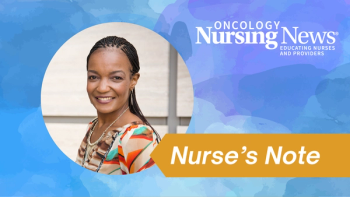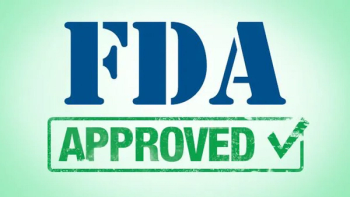
- October 2015
- Volume 9
- Issue 8
Helping Patients Tell Their Stories
"What's your opinion about using hair color?" I asked my doctor shortly before beginning chemotherapy. "I don't have an opinion," he said. "Talk to one of the nurses."
Dana Shaffer
Charlotte Evans
“What’s your opinion about using hair color?” I asked my doctor shortly before beginning chemotherapy. “I don’t have an opinion,” he said. “Talk to one of the nurses.” The nurse in the room with us, whose own hair was colored, answered my question with another: “Why would you want to put more chemicals in your system?”
That snippet of the cancer experience from the patient’s side was written by Judy M, part of an essay she wrote for the personal story—writing program at Smilow Cancer Hospital at Yale-New Haven.
The program began its third year at Smilow in September 2015 as part of the Art Expression Program of the Complementary Services Department. The idea came from Charlotte Evans, a retired New York Times reporter and editor who, as a volunteer, functions as the group’s coach. Current and former Smilow patients are welcome to join after attending one orientation class. And while there is no requirement that they write about their illness and treatment, that’s what often emerges.
Art Expression, whose coordinator is Dana Shaffer provides a true healing experience. A broad spectrum of classes and workshops—taught by volunteers—offers patients the opportunity to explore creative and collaborative outlets. Beyond that, the Complementary Services Department offers patients oncology massage, reiki, guided relaxation, yoga and meditation. All services are free.
Expressive writing has been shown to be helpful for cancer patients. According to a 2015 study by Gallo et al, “…it is evident that the strategies of expressive writing improves the management of the disease, [and] reduce[s] the physical and psychological symptoms related to the tumor while reducing the emotional distress in patients…”1
The Smilow group meets on a continuing basis every other Thursday morning—usually four to six patients around a table in a 7th floor conference room with a view of the healing garden.
Charlotte begins each session with a “ripped from the headlines” feature—two or three current articles that have to do with cancer, writing or both. Then there is a “process” discussion, during which participants talk about what has helped them write since the last session or what has gotten in the way (other than treatments and medical appointments).
Then comes the main event—reading what they have written, with feedback from around the table, lastly from Charlotte. Although the group is supportive, it isn’t a typical support group. The comments are tightly focused on the writing—content, style, organization, usage. They are delivered with kindness, and with an eye toward producing a trim and compelling essay that can help bring a sense of order to a chaotic time of life. Tears sometimes flow with the reading, but everybody understands.
As well as being an expressive outlet, the essays serve as a resource over time. Patients can go back several weeks or months and gain perspective on how things have changed, for better or worse. As the author EL Doctorow once said, “Writing is like driving at night in the fog. You can only see as far as your headlights, but you can make the whole trip that way.”
The Art Expression Program is working to produce an annual Patient Story Writing publication that could be used to give nurses and other medical professionals a better understanding of the physical, emotional and spiritual demands of a cancer diagnosis. With adequate funding, the collection of essays would also lend itself to a staged-reading event.
So, what decision did Judy M make about dyeing her hair?
“Self-esteem. I wanted to feel better about myself. Coloring my hair was a simple thing that I could do for myself. Empowering. Something I could control. Plus, Dr. Google didn’t absolutely, positively, forbid it. And it wasn’t as if I didn’t have cancer already.”
Judy M, who wrote about whether or not to dye her hair, died in May of 2015. Her husband has given permission for her essays to be published in an effort to help others.
For more information about the Art Expression Program, contact
Reference
1. Gallo I, Gamino L, Di Monte V. The use of expressive writing in the course of care for cancer patients to reduce emotional distress: analysis of the literature. Prof Inferm. 2015;68(1):29-36.
Articles in this issue
about 10 years ago
Caring for the Whole Patient-for Nurses, It Comes Naturallyabout 10 years ago
Patient Advisors and Navigators Join Forces to Improve Cancer Careabout 10 years ago
Integrative Healthcare: Caring for the Whole Patientabout 10 years ago
Young Women, Never-Smokers, and Lung CancerNewsletter
Knowledge is power. Don’t miss the most recent breakthroughs in cancer care.
















































































